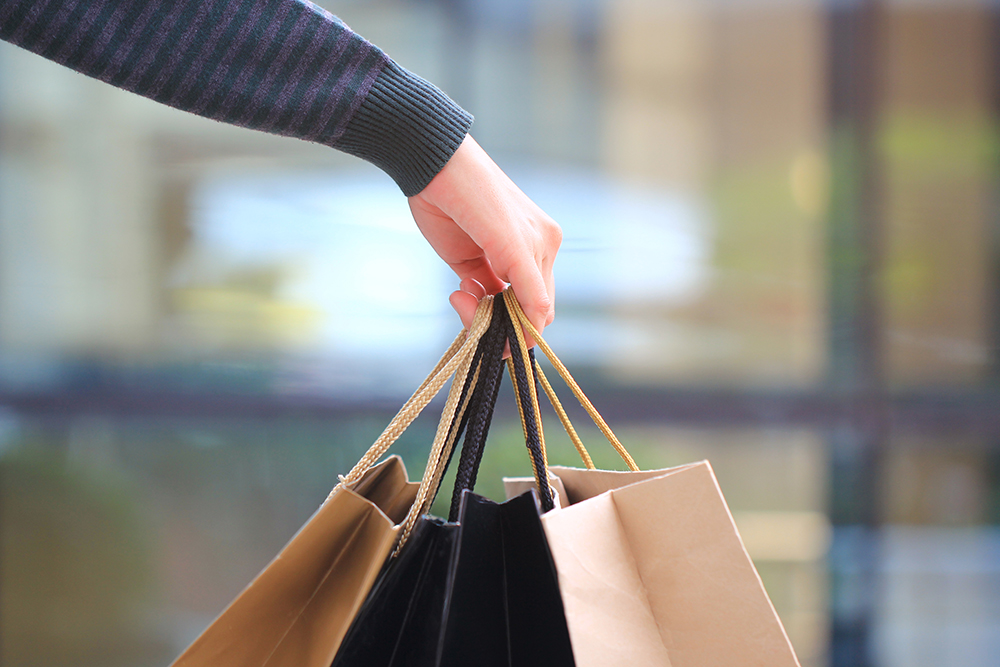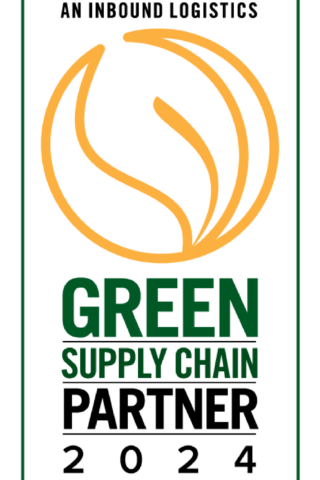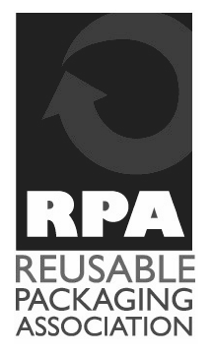As online shopping continues to increase, so, too, are product returns.
To help meet this rising demand for reverse logistics, transportation providers are adding services to simplify product returns for shippers and consumers while also increasing efficiency.
At the same time, retailers are exploring ways to help control costs and increase customer satisfaction.

Brill
“Record-breaking returns show just how dramatically the retail and e-commerce worlds are changing,” said Jim Brill, reverse logistics and returns manager at UPS. “As online shopping surges in popularity, seamless e-commerce returns are becoming a critical part of the e-commerce value proposition.”
Satish Jindel, founder of SJ Consulting Group, said e-commerce has turned reverse logistics upside down. He cited estimates that the cost of returns reached $500 billion in 2019.
Product returns add not only cost, but also complexity to the supply chain, said Tony Sciarrotta, executive director at the Reverse Logistics Association.
HOLIDAY RETURNS ARE BIG BUSINESS: Busiest time of year for reverse logistics
“It is not like forward logistics,” he said. “It is pallets and [bulk boxes] full of mixed products. It is a very different marketplace on the reverse side.”
FedEx does not share specific figures on consumer product return volumes, but Ryan Kelly, FedEx’s vice president of global e-commerce marketing, said the company is growing returns at a double-digit rate year-over-year. He expects the growth to accelerate and continue.

Kelly
“Returns is a quickly growing market due to the growth of e-commerce,” Kelly said, adding that FedEx estimates that 15% of e-commerce orders are returned, with about 5% going to a store and 10% being shipped back.
DHL can see return rates as high as 25% for e-commerce customers, said Ryan Hunter, vice president for global customers at DHL Express Americas. “It depends on the commodity and the type of goods being sold,” he said, adding that while some retailers look at returns as a challenging process and a high cost, a returns policy can have a significant effect on return rates. DHL Supply Chain ranks No. 3 on the Transport Topics Top 50 list of the largest logistics companies in North America.
Hunter said 66% of e-commerce buyers check and verify the returns policy before they make a purchase. UPS’ Pulse of the Online Shopper study found that 73% of shoppers surveyed said the overall returns experience influences their likelihood to purchase from a retailer again, and 68% said the returns experience shapes their perceptions of a retailer. Nearly half — 42% — said free return shipping contributes most to a positive returns experience.
Although many major retailers focus first on taking care of their customers at all costs, they must also find ways to control the rising cost of reverse logistics. RLA’s Sciarrotta said sophisticated retailers know in advance where they want returns sent for maximum recovery.
“If it is new, it may go to one place. If it has been worn, used or tested, it will go to another place,” he said. “If it is a certain volume, it may go back to another place. Some retailers will tell people to keep it.”
The product type is another important factor. “Electronics age every day, but, ultimately, clothing can always find another home,” Sciarrotta said. “It is a question of asset recovery and where can you place the item.”

FedEx Package sorting. The company estimates that 15% of e-commerce orders are returned. (FedEx)
Kelly said FedEx helps its customers optimize operations by eliminating waste and identifying the best disposition method for each product, whether it’s return to vendor, return to stock, liquidation, recycle or salvage. FedEx offers several transportation options for returns, ranging from cost-effective FedEx Ground to speedy FedEx Express. What’s more, FedEx Returns Technology provides a unified returns management platform that can integrate directly with the retailer’s website to initiate a return authorization, track return shipments while in transit and identify what has been received at the returns-processing facility.
The U.S. Postal Service also offers several speeds, including Priority Mail Return Service for delivery in one to three business days and Ground Return Service, an economical way to ship less-than-urgent items, said Gary Reblin, vice president for new products and innovation at USPS.
UPS’ Brill said the company offers several services to make returns more efficient, such as the UPS Returns Manager, which gives shippers control and visibility over their returns, and its partnership with software firm Optoro.
“UPS and Optoro work together to provide a streamlined reverse logistics solution that combines UPS’ operational and logistics expertise with Optoro’s returns optimization platform that can help maximize recovery value and reduces harmful environmental waste,” he said.
The Proliferation of Drop-Off Sites
To increase convenience, logistics providers are adding access points and partnering with retailers to offer more drop-off locations.
USPS has 34,000 access points, which provide about 97% of U.S. consumers a retail access point within 5 miles of their location, Reblin said.
“We have added capacity to our network by adding equipment to sort, process and deliver the expected mail and package volumes, including returns,” he said.
UPS, which is based in Atlanta and ranks No. 1 on the Transport Topics Top 100 list of the largest for-hire carriers in North America, has 14,000 UPS Access Point locations, including Michaels, Advance Auto Parts and CVS Pharmacy stores, but packages dropped there should be pre-labeled. UPS also operates more than 4,800 UPS Store locations, which can help with any packing, shipping or returns needs, Brill said. “For consumers on the go, preparing the package and making a return is another item on the task list during this busy time of the year. Anything to make it easier is a plus,” he said.
Amazon returns can be dropped at Kohl’s or a UPS Store, and they don’t have to be pre-packaged.
FedEx merchants using FedEx Returns Technology can allow customers to drop off packages at Walgreens.
“Shoppers prefer to take their online returns to a physical location, so by expanding FedEx Returns Technology to our broader convenience network with Walgreens, we’re enabling merchants and e-tailers to offer more locations for their customers to bring their returns,” Kelly said, adding that customers can take pre-labeled packages to more than 55,000 FedEx drop-off points.
Memphis, Tenn.-based FedEx, which ranks No. 2 on the for-hire TT100, also has formed a strategic alliance with Dollar General, adding FedEx drop-off and pickup services at thousands of Dollar General stores. The alliance will increase the FedEx Retail Convenience Network to more than 62,000 locations by the end of 2020.
RLA’s Sciarrotta expects to see more partnerships involving drop-off sites. “The e-tailers are going to great lengths to build that customer loyalty,” he said.
One of the challenges can be finding space to store returns, said Stephen McIsaac, senior vice president of brokerage operations at Nolan Transportation Group, a third-party logistics firm based in Atlanta. He explained that a shortage of warehousing space in the U.S. is driving the use of drop trailers.
“Maybe instead of a retailer renting a warehouse, they might reach out to us to see if they can get a drop trailer pool, and there might be trailers sitting next to a warehouse where they can store those returns,” McIsaac said.
Technology Could Make Returns Experience Easier, Less Needed
Advances in technology could help mitigate the cost of return shipping.
“Advanced AI is going to be able to tell Amazon the value of a product on the secondary market,” Sciarrotta said. “If the value is $10 for a $50 sweater, but shipping is $12, they may say, ‘Keep it.’ Or they may say, ‘If we give you 30% off, will you keep it?’ That may mean that the volume of returns won’t grow at the rate they are today.”

Sciarrotta
Retailers are also working to minimize the need for returns. “The No. 1 driver of a return is a product that doesn’t meet the customers’ expectations,” Sciarrotta said.
Jindel said broadband and 5G wireless technology will improve retailers’ ability to display products digitally. “You’ll be able to load your picture and drop my dress on you and see how it looks. That will bring a reduction in returns,” he said. “It is inconvenient for you to have to return an item. I want to make it a pleasant experience for you, so you get the right size.”
Sciarrotta said technology will also help retailers build data on consumers, which will help them recommend the right size.
“They’re going to go past the point of saying the size runs small,” he said. “They’ll say, ‘You ordered these three sizes before and kept this size.’”
Retailers are happy to send shoppers products in three different sizes to see which one fits you and have them return the other two, Jindel said. “That has increased the rate of returns in certain retail segments,” he explained, adding that apparel returns average about 15-18%.
Kelly said software vendor MetaPack’s 2018 consumer research report indicated that 41% of consumers often or sometimes purchase multiple products online, knowing they will return some or all of them.
The ease of returns or reverse logistics is essential in the buying process, NTG’s McIsaac said.
Part of that strategy is ensuring customers get a refund quickly. Retailers determine when they offer credits, UPS’ Brill said. In some cases, a retailer may elect to release the refund when they know the return is moving in the UPS network, he explained.

The United States Postal Service has developed an automated verification method that improves tracking of return packages. (USPS)
Kelly said FedEx can help speed up the refund process through the use of return merchandise authorizations, which offer real-time visibility into incoming returns. “FedEx Office can also do item matching and inspection if set up by the retailer,” he said.
USPS has developed an automated verification method that improves tracking of return packages. “Merchants have access to information, including package weight, measurements and scanning details, which allows shippers to credit their customers sooner for returned merchandise,” Reblin said.
Ultimately, each retailer’s returns strategy is different.
“Which products do they need back faster, and which can move slower? What kind of visibility into returns do they need? How environmentally friendly do they want their returns? Why are certain products returned? Do they need a logistics provider to handle their entire reverse logistics process? A lot goes into a solid returns strategy,” Kelly said.
Original Post: https://www.ttnews.com/articles/rising-product-returns-put-pressure-retailers-optimize-reverse-logistics









